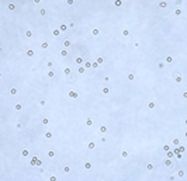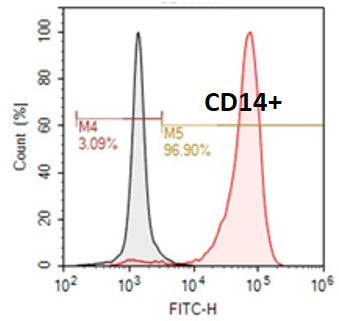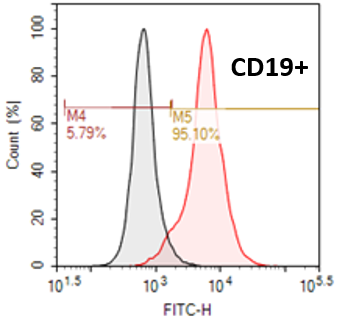Human Normal Peripheral Blood CD56+ NK Cells

Human CD56+ Natural Killer (NK) cells are critical cytotoxic effector lymphocytes of the innate immune system, playing an essential role in eliminating infected or tumorigenic cells. They are characterized by the presence of CD56 protein (also known as NCAM) on their surface, which serves as a marker for NK cell identification.
Key Characteristics and Functions:
-
Innate Immune System:
-
NK cells are always ready to respond to threats, unlike adaptive immune cells that require prior exposure to specific pathogens. This allows NK cells to act quickly during early stages of infection or tumor development.
-
-
Role of MHC I in NK Cell Activation:
-
MHC I (Major Histocompatibility Complex I) molecules on the surface of healthy cells generally act as inhibitory signals for NK cells, preventing them from attacking normal, healthy tissue. When target cells lose or downregulate MHC I expression (a common feature in tumor cells and virus-infected cells), the inhibitory signal is diminished. However, this loss of MHC I alone is not sufficient to fully activate NK cells.
-
NK cells require additional activating signals to be fully activated. These activating signals come from other cell surface receptors, such as NKG2D, NKp46, and DNAM-1, which recognize stress-induced ligands on the surface of abnormal cells. The balance between inhibitory signals from MHC I and activating signals from other receptors determines whether NK cells will attack the target cells.
-
-
Cytotoxic Activity:
-
NK cells are cytotoxic and can kill infected or cancerous cells directly. They achieve this by releasing perforin and granzymes from cytotoxic granules. Perforin forms pores in the target cell membrane, while granzymes enter through these pores to trigger apoptosis (programmed cell death) of the target cell.

-
-
Cytokine Production:
-
In addition to their cytotoxic function, NK cells also produce cytokines such as IFNγ and TNFα, which help modulate immune responses and recruit other immune cells to the site of infection or tumor.
-
-
Subsets:
-
NK cells can be divided into two main subsets based on CD16 expression:
-
CD56brightCD16-: These cells are found in secondary lymphoid tissues and are primarily known for their cytokine production. They are less cytotoxic before activation.
-
CD56dimCD16+: These cells are more abundant in peripheral blood and are known for their strong cytotoxic activity.
-
-
-
CD56 as a Pathogen Recognition Receptor:
-
Recent studies suggest that CD56 may also function as a pathogen recognition receptor, enabling NK cells to respond directly to certain pathogens, including fungi.
-
Role in Disease:
-
Cancer: NK cells contribute to immune surveillance, recognizing and killing tumor cells, which helps prevent cancer spread.
-
Infections: NK cells are vital for controlling viral and bacterial infections, acting quickly to limit pathogen spread before the adaptive immune response is fully activated.
-
Autoimmune Diseases: Dysregulated NK cell function may lead to autoimmune diseases, where NK cells mistakenly target healthy tissue.
Isolation of Human CD56+ NK Cells:
Our Human Normal Peripheral Blood CD56+ NK cells are isolated from peripheral blood mononuclear cells (PBMCs) using immunomagnetic selection (either positive or negative), depending on the specific needs of the user. The peripheral blood is collected through leukapheresis from fully consented, IRB-approved donors who are tested negative for HIV, HBV, and HCV. The blood is collected in acid-citrate-dextrose formula A (ACDA) to maintain cell viability.

Summary:
Human CD56+ NK cells are key components of the innate immune system, with their cytotoxic activity and cytokine-producing capabilities. These cells are activated by the loss of MHC I molecules in combination with activating signals from other surface receptors. This balance between inhibitory and activating signals allows NK cells to recognize and eliminate infected or cancerous cells. Their ability to act as pathogen recognition receptors adds an additional layer of immune defense. The ability to isolate these cells from peripheral blood makes them valuable for research and therapeutic applications.
| Catalog# | Format | Product name | Size | Price | Quantity |
|---|






